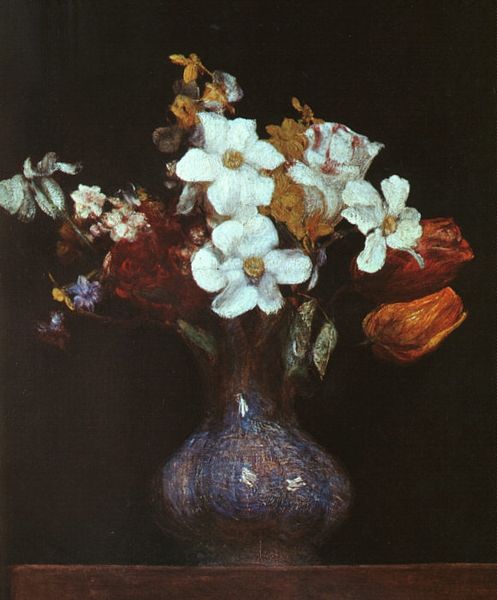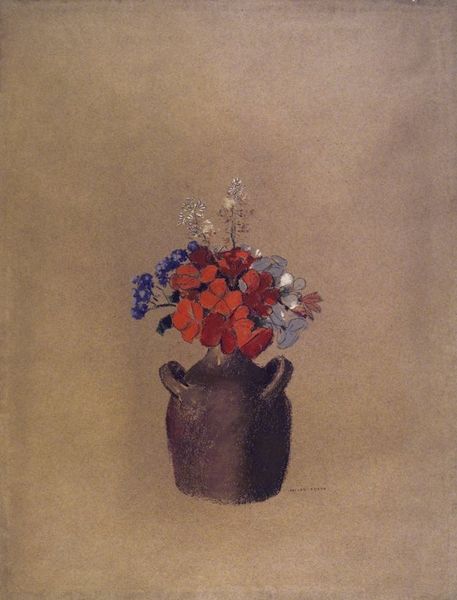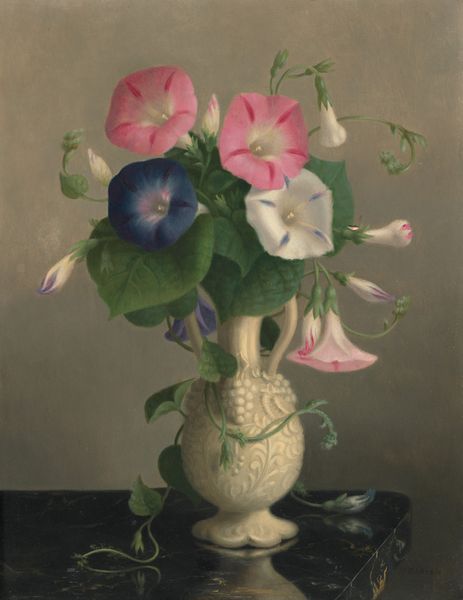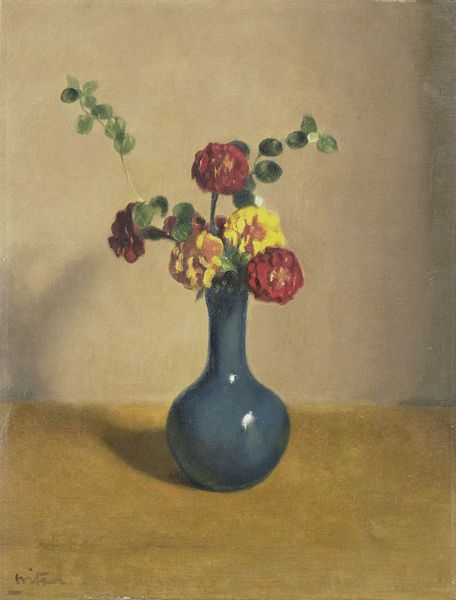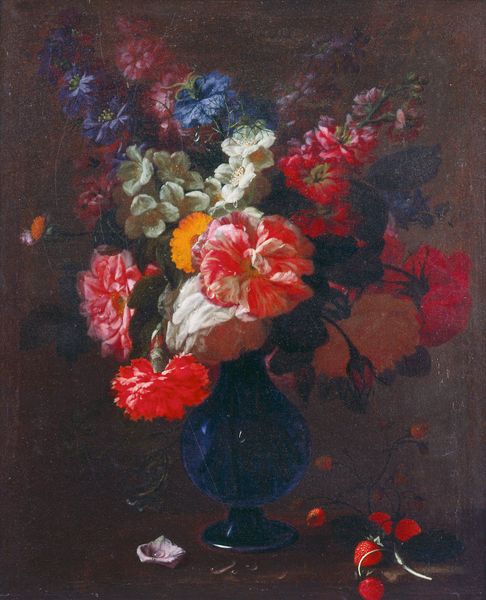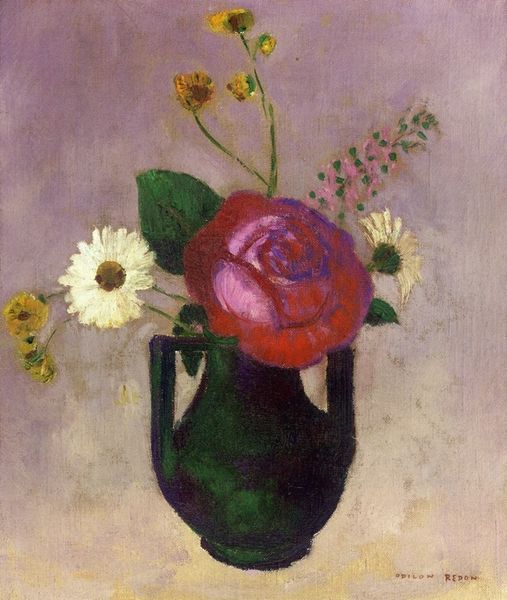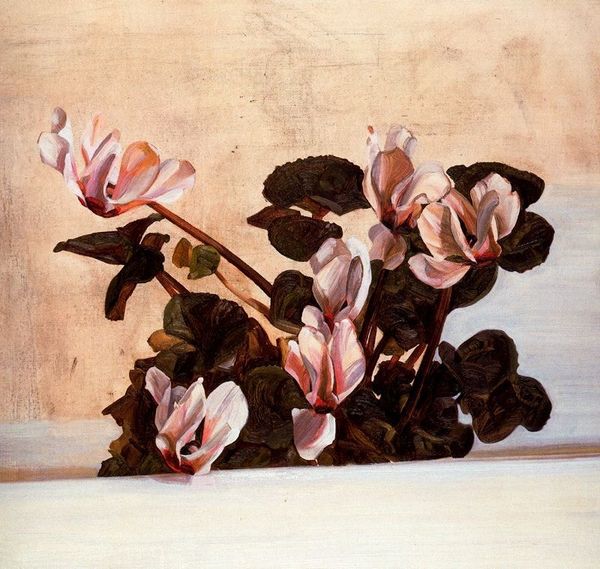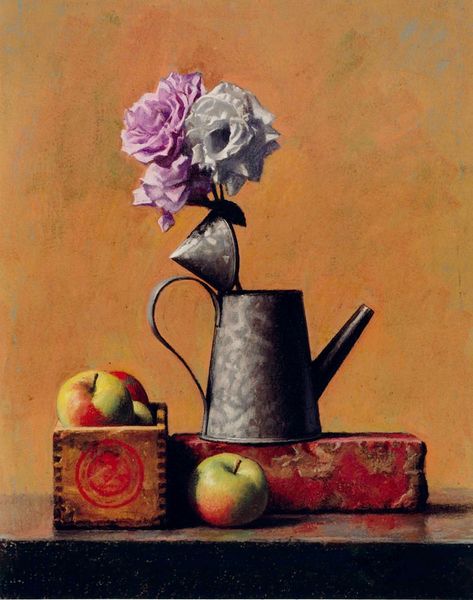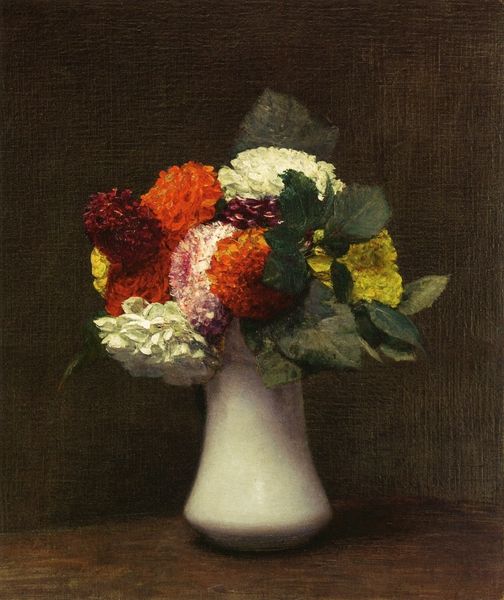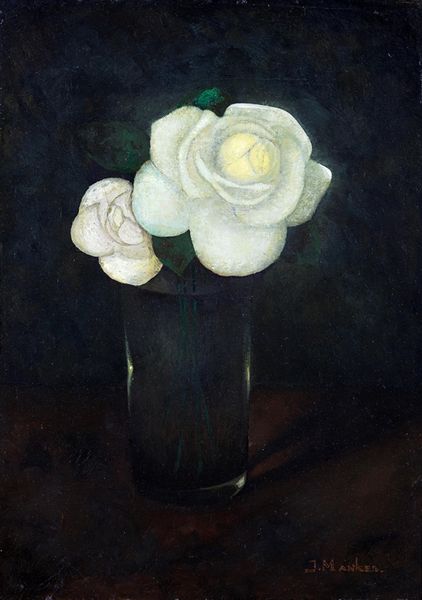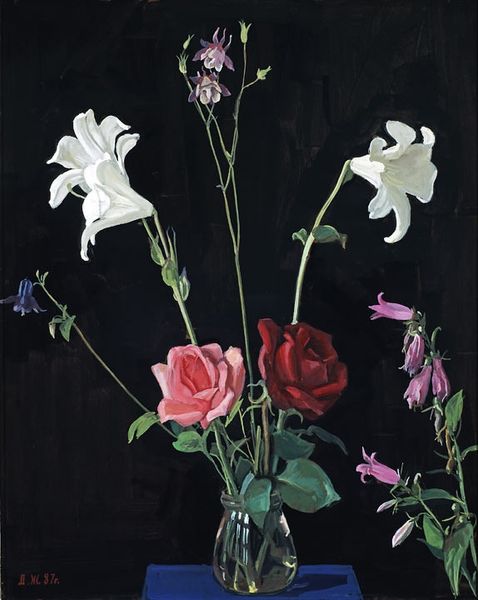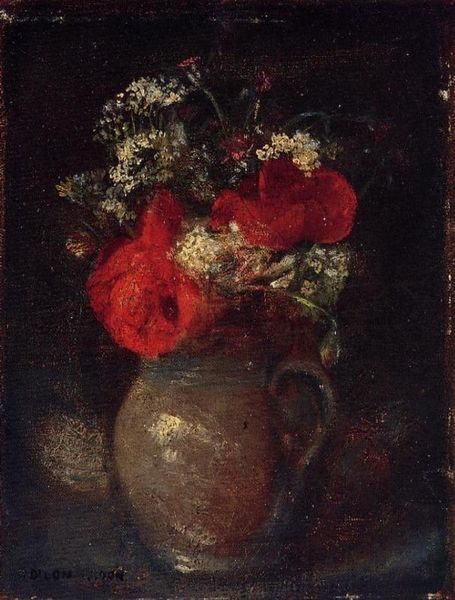
Copyright: Public Domain: Artvee
Curator: Let’s turn our attention to this painting by Odilon Redon. It's titled "Flowers; Poppies and Daisies" and was completed around 1867. Redon's earlier works are quite different from what we usually associate with him. Editor: The overall feeling for me is somber and muted, quite intimate actually. There's that stark contrast, almost melodramatic lighting on the blooms against such a dark background. Curator: Indeed. It’s fascinating to consider the evolution of Redon's style. Here, you see the clear influence of Romanticism—notice the emotional intensity, and the focus on color? It's rendered in oil, and you can see in some areas a slightly raised texture due to the impasto technique. But instead of typical bright floral hues, he subdues them. It foreshadows some elements we will find later in his symbolist pieces. Editor: It does look as if there has been great care taken over how the glaze appears on that simple utilitarian-looking vase; in places it even appears to catch the light. I find myself more interested in that vessel—that support of the floral elements—than the flowers themselves. Curator: That's a very material-centric way of looking at it. He might have wanted to evoke a sense of mortality, perhaps, a meditation on the transience of beauty. Editor: Or simply the transience of the flower seller's ability to deliver these items to a domestic space for the pleasure of those who dwell within it, an ability provided via new material infrastructure. What would normally be overlooked, like that vase and the labor involved, actually becomes quite interesting once we accept it into our narrative. Curator: I appreciate your point of view, and how it emphasizes the context in which the image gains traction. I’ve always found that what one *expects* from Redon clashes interestingly with a scene like this one. Editor: Ultimately it reminds us to look beyond the surface and question assumptions.
Comments
No comments
Be the first to comment and join the conversation on the ultimate creative platform.
